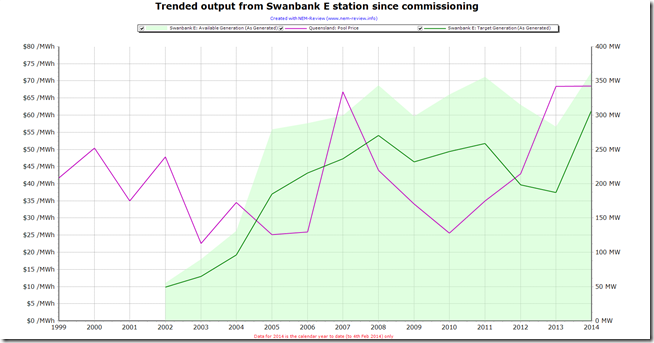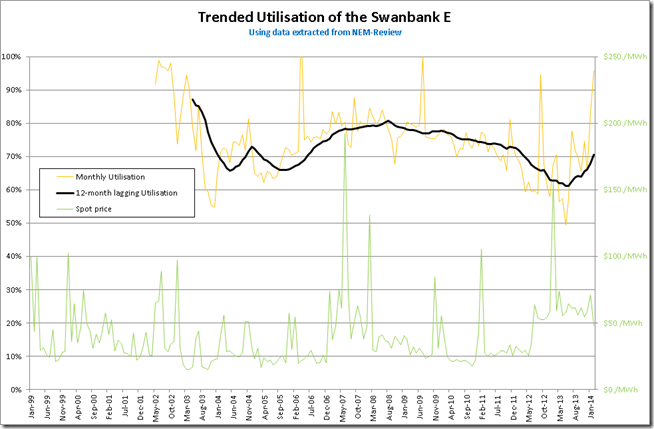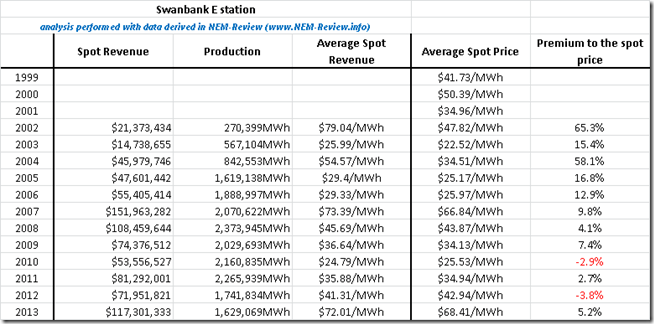[posted today at 16:00 after some quick analysis and without thorough checking. If you see any errors in the following, please let us know]
It was with interest today that we noticed this tweet from Angela Macdonald-Smith at the AFR, with respect to their article talking about the announced mothballing of Swanbank E and the subsequent return-to-service of the 2 mothballed units at Tarong:
The move was not entirely a surprise, given the ongoing pattern of underlining declining demand for electricity (notwithstanding some strong peak demand in the recent heatwave this summer) and rising gas prices as the three large east-coast LNG plant come online over the next couple years. The end of Queensland’s successful 13% gas scheme this year and the pending removal of the price on carbon would have been two other factors resetting the relative economics of coal and gas as fuels of choice for electricity generation.
Running some quick numbers in NEM-Review, we see that the output of the station has fallen in recent years (even in 2013, despite the higher average price for the year):
Zooming into the data further we see the utilisation had been declining in the past couple years (though this had risen over the past 12 months as a result of availability falling more quickly than the ongoing fall in output):
This is supported by the average spot revenues calculated from this NEM-Review data:
What’s perhaps surprising is that the removal of of Swanbank E would be paired with a return to service of two units at Tarong – however one of the other factors that would have played a role in this parallel decision is the addition of approximately 1000MW of base-load demand into the Queensland grid as a result of upstream electric compression of gas pulled from CSM wells supplying these LNG trains.






And almost every other CCGT power station in the NEM will go the same way in the next 12 months. Most operators will not formally announce mothballing and will say that the units are available for peaking duty, but as most of the plants do not have bypass stacks they will be useless as peakers.
Thanks for another comment, Interested Observer
Each gas-fired plant will have their own local considerations to work through, with factors including type of plant (e.g. cogen/not, combined/open/other, etc…) , contracted gas supply arrangements, location, portfolio dynamics and drivers etc…
We previously commented on Tamar Valley as just one example.
However in an environment where gas prices are rising (if current trends continue), and (again, if current trends continue) wholesale electricity prices remain capped by declining demand and increased non-scheduled or semi-scheduled generation, then the changing spark spread could be expected to have other impacts.
Paul